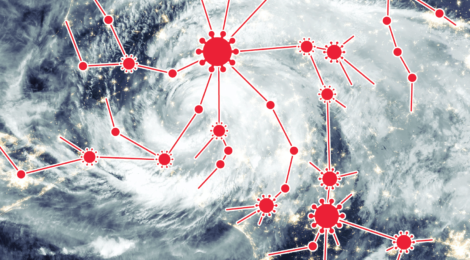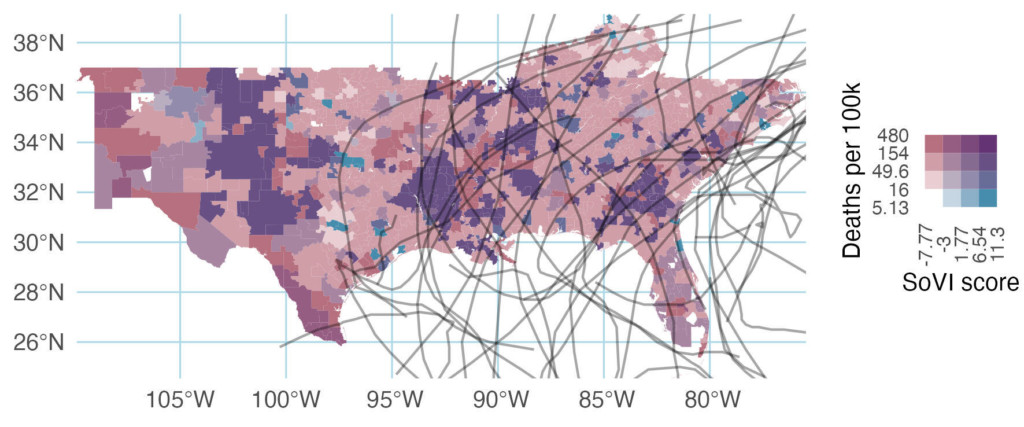
Disasters collide at the intersection of extreme weather and infectious diseases
Natural disasters like hurricanes, droughts, and floods are becoming increasingly frequent and severe as a result of global climate change and human activities. Perhaps more alarming is the potential for compounding when these disasters occur simultaneously or in quick succession, leading to catastrophic impacts on the environment and human life. Compound disasters occur when different types of disasters interact, resulting in complex impacts that are difficult to predict. For example, hurricanes can lead to increased microbial activity in water supplies and forest fires can lead to soil erosion amplifying the impact of floods.
When these events occur, they increase environmental, economic, health, and social risks, particularly when coupled with epidemics like COVID-19 as each variable serves to inform the response and resilience to the other. This indicates a clear need to enhance our ability to respond to such interactions.
In this paper, published in Ecology Letters, we show that in the Southeastern United States where we reside, vulnerability to hurricanes and COVID-19 were often correlated. Accordingly, we propose the development of a new science of colliding disasters and sophisticated disaster response systems that can address the scale and complexity of compound disasters and their consequences. This will involve the integration of diverse fields including climate science, public health, ecology, and social science to enhance our preparedness, response, and recovery. Failure to act could significantly exacerbate the impact of natural disasters and epidemics, resulting in more humanitarian crises.

Corresponding Author: John Drake, jdrake@uga.edu





